
ChincoteagueNWR > June 2015
info@GrayFoxImages.com

ChincoteagueNWR > June 2015 |
|
Michael W Masters
info@GrayFoxImages.com |
| Image Thumbnails |
|
The Island at the End of the Road Island of Change Each time we visit Chincoteague NWR, the refuge seems a little more shopworn, a little less like the place teeming with birds, ponies, wildlife and surprise scenics that we remember from our earliest years. Storms have taken a toll over the decades and areas that once were productive photographically have gone downhill significantly. The beach no longer has dunes where shorebirds once roosted in the morning; Little Tom's cove behind the beach has lost most of its marshy vegetation; and the area between -- once full of lush growth and tidal pools -- is now a barren scar of sand and shell fragments. Over the years it became clear that the beach area is the best location for morning photography, with Swan Cove occasionally providing subjects as well. The culvert pool area along the beach road has at times been an almost magical gathering place for waders, but it is also all to often overrun by people fishing these days. Assateague Overlook and the border along the road usually turn up only a handful of useful subjects -- examples include this year's snapping turtle and the deer in Black Duck Pool. The sun is wrong for the beach in the afternoon, but that's when the Wildlife Loop becomes available. However, the number of acceptable images from the Wildlife Loop, never plentiful, has inexorably dwindled to a trickle. This year there were none. Perhaps worst of all, the Fish & Wildlife Service has a draft plan to close the current beach and the road starting at Swan Cove. According to FWS, with the trend toward increasingly frequent disruptive storms it is less costly to open a new beach in a more protected area north of the Wildlife Loop than it is to continue to repair the current beach and parking lot at Tom's Cove, where storms sometimes competely overwash the island. In the FWS plan, only foot traffic would be allowed into the Swan Cove and beach area -- with drastic impact on access for photographers with heavy gear payloads. Winter access by vehicle would be retained, a somewhat hollow concession, especially if the beach road continues to deteriorate, a process begun by Hurricane Sandy, and is not repaired -- after all, with no public beach there would be no incentive to do so. The beach relocation is not popular, but FWS realizes that providing a beach somewhere along the Atlantic shore is a virtual necessity because it is an economic cornerstone for the Town of Chincoteague, which makes it a political issue too important to ignore. However, the utility of vehicular traffic to the much smaller (and less influential) community of nature observers and photographers seems to have been forgotten in the plan. The effect of this change, combined with the continued barrenness of the Wildlife Loop, is that for many the refuge will likely cease to be a suitable destination for long lens photography. Of Bunnies, Squirrels and Gulls This year also brought a change in our rental situation. Our perfect house, the lovely three-bedroom, two-story on Chincoteague Bay with the great sunset view that we've rented for years and that has suited us to a "T" has been sold, no longer to appear on the rental market. We made do with a rental house of very nice dimensions and layout in Oyster Bay this year, but the thought of being rental vagabonds in future years was a bit daunting. Nevertheless, change is the order of nature, and we'll adapt, like the good Darwinians that we are. On a positive note, last year's Year of the Bunny was reprised this season, with good hunting around the Assateague Island National Seashore Visitor Center. More folks should stop in and check out the inside. Although significantly smaller than the refuge's Herbert Bateman Visitor Center, there are displays and activities for kids as well as adults and a very nice, albeit small gift shop. I visited briefly and received a very warm and helpful welcome from the refuge staff inside. Speaking of the Bateman center, I was able to successfully make a very close approach to a Delmarva fox Squirrel one morning in the parking lot just as staff began arriving. I stayed low and crept closer very gradually. The creature definitely knew I was there, but it was mostly interested in replenishing food supplies, so it hardly stopped stuffing its face the whole time I was there. Other than that it was mostly chasing gulls in the beach parking lot. One foggy morning did see a snowy egret fishing in Swan Cove. Once upon a time, there were fishing frenzies in Swan Cove, with literally hundreds of birds of every variety vying with each other for the best spots. Now, to find a single egret within long lens range is a blessing. The other lucky break occurred back on Chincoteague Island, along the canal into Oyster Bay. A very strange looking duck posed for quite a while -- deep, rich brown body; green neck and head with dark bill; white throat. No such bird appears in the guides, but the curled tail feather gave this customer away as a Mallard cross. Returning to the theme of change, it is a disturbing thought that with the proposed disruption to the refuge alluded to above -- propelled by weather-driven natural habitat succession -- the Island at the End of the Road may one day no longer possess that special character that has made it our family getaway for two and a half decades. |
 |
 |
 |
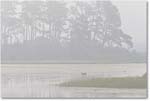 |
 |
 |
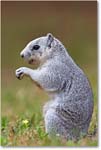 |
 |
 |
 |
 |
 |
 |
 |
 |
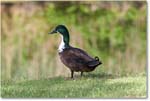 |
 |
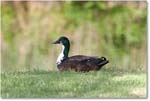 |
 |
 |
 |
 |
 |
 |
 |
|
|
§ |
|
||
 |
 |
 |
 |
 |
 |
 |
 |
 |
 |
 |
 |
 |
 |
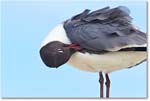 |
 |
 |
 |
 |
 |
 |
 |
 |
 |
 |
 |
 |
 |
 |
 |
|
|
§ |
|
||
 |
 |
 |
 |
 |
 |
 |
 |
 |
 |
 |
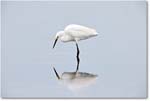 |
 |
 |
 |
 |
 |
 |
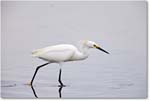 |
 |
 |
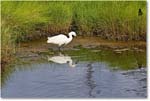 |
 |
 |